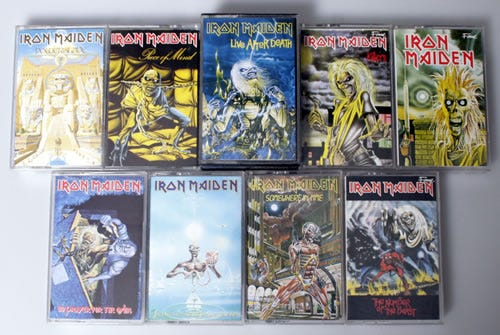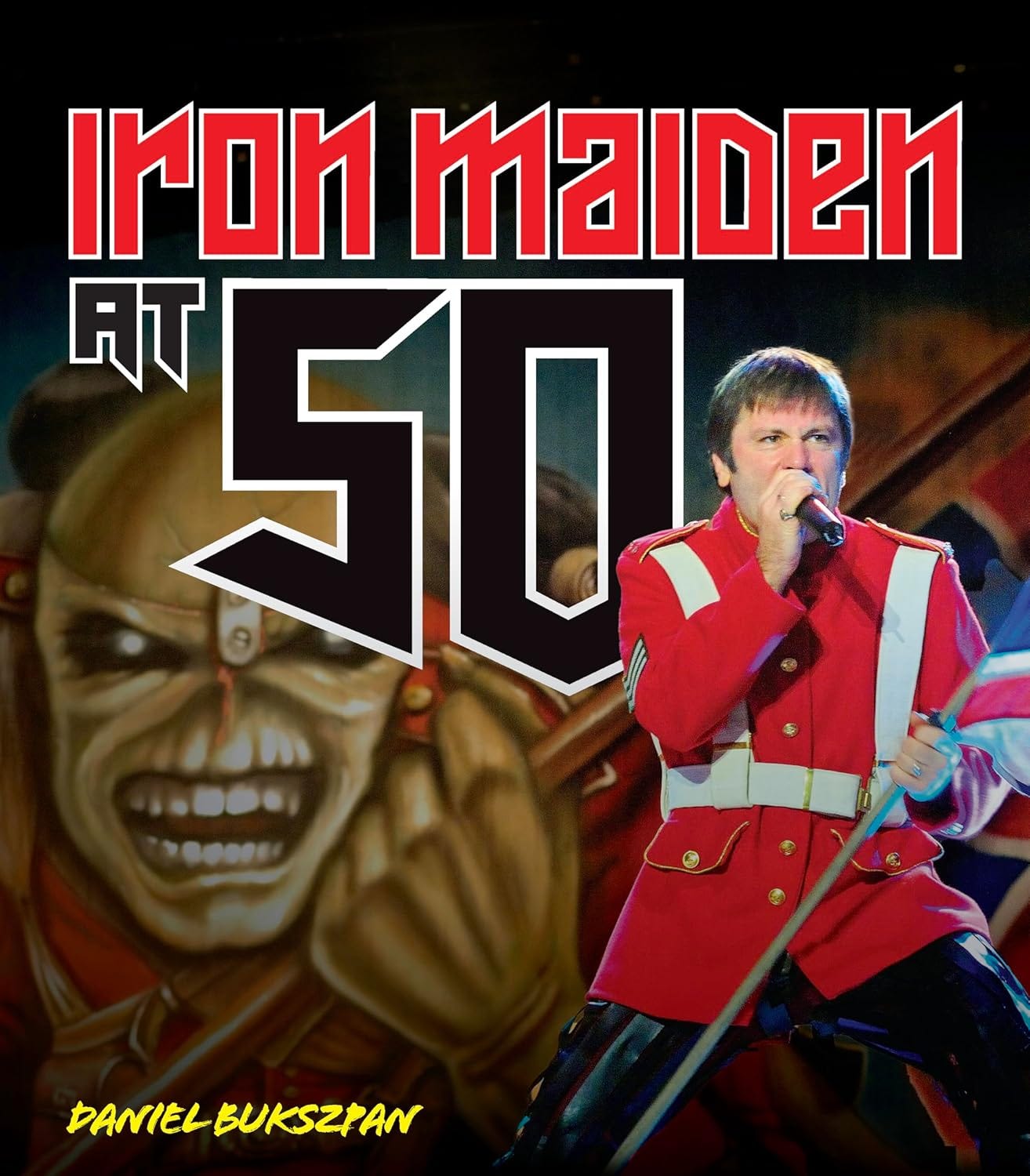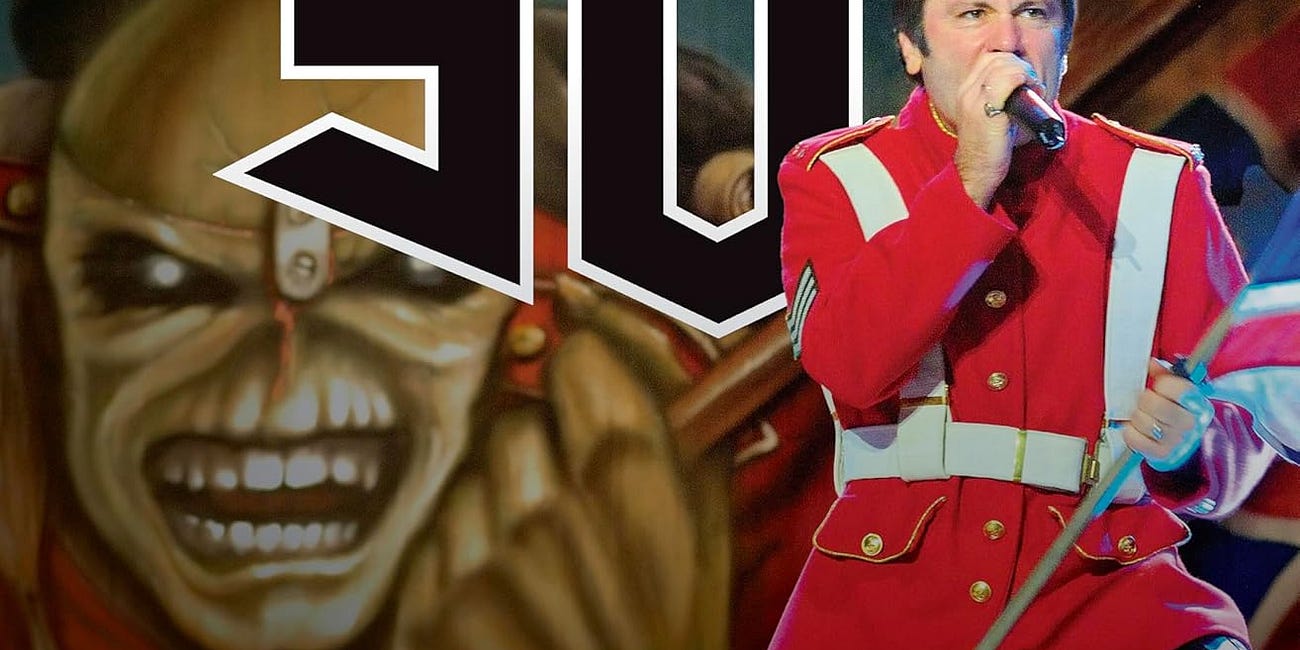Class is in Session: Iron Maiden Homework Assignment
Three steps to prep for our 80s deep dive with Daniel Bukszpan—plus the big question we’re wrestling with together
Time to crack open those cassettes, metal scholars! Our next episode is diving headfirst into the glory days—when Bruce Dickinson hit his soaring stride, when Eddie became metal’s most iconic mascot, and when Iron Maiden ruled the world with galloping basslines and twin guitar harmonies that could resurrect the dead.
We’re not tackling this story alone. Joining us is Daniel Bukszpan, author of the brand-new book Iron Maiden at 50. Daniel has spent serious time digging into Maiden’s five-decade journey, chronicling 50 pivotal moments that shaped the band’s legendary status. From Steve Harris founding the band in East London to their Boeing 757 tours, Daniel’s book captures the full scope of Maiden’s evolution.
But here’s the thing—we need YOU to help us tell this story completely.
When this episode drops, the comments section becomes our collective memory bank. Your insights, your favorite deep cuts, your “wait, you forgot about…” moments—that’s what transforms a good episode into the definitive conversation about Maiden’s most crucial decade.
So here’s how we can collaborate to capture the full Iron Maiden 80s experience:
Join Us in the Deep Dive
Revisit the essential 80s Maiden catalog—Iron Maiden, Killers, The Number of the Beast, Piece of Mind, Powerslave, Somewhere in Time, and Seventh Son of a Seventh Son. Notice the details we might miss. Which guitar solos still give you chills? What lyrics hit different now than they did back then? Where do you hear the band pushing their own boundaries?
Consider Grabbing Daniel’s Research
If you want the full context, Daniel’s Iron Maiden at 50 is packed with the kind of details that spark great discussions. Those rare photos, behind-the-scenes stories, and pivotal moments—they’re conversation starters waiting to happen.
Come Ready to Share Your Perspective
Here’s where your voice matters most: What were the real highs and lows of Iron Maiden’s 1980s era? Not just the obvious answers, but the nuanced stuff. The creative risks that paid off (Powerslave’s theatrical ambition), the moments that showed cracks (World Slavery Tour’s brutal pace), the experiments that divided fans (Somewhere in Time’s synthesizers).
Did Bruce’s arrival mark pure triumph, or did something get lost from the Di’Anno era? How did the relentless album-tour cycle shape their sound? Where do you see the seeds of their later evolution—or their temporary stumbles?
The beauty of Iron Maiden’s 80s run is that every fan sees it differently. Some worship at the altar of Powerslave. Others argue that Killers deserves more love. Some think Seventh Son was their creative peak, while others see it as the beginning of overthinking.
Your comments when this episode goes live? That’s where the real story lives. The memories, the disagreements, the “you have to mention this moment” insights—that collective wisdom is what makes these deep dives worth doing.
So dust off those records, refresh your Maiden memories, and get ready to help us tell this story right. When the episode drops, we’re counting on you to fill in the gaps, challenge our takes, and remind us why Iron Maiden’s 80s era still matters.
Up the irons, collaborators. Let’s make this conversation one for the ages.
Fearless, Fast, and Forever: Iron Maiden’s 80s Reign
Iron Maiden fans, get ready for a deep dive into five decades of heavy metal legend. This week, Dig Me Out welcomes celebrated author Daniel Bukszpan—the mind behind Iron Maiden at 50—a passionate and visually stunning tribute chronicling the band's journey from East London pubs to global stadiums. Bukszpan’s new book, released September 16th, pays homa…






I can’t even remember how I first heard Iron Maiden — it just seems like they were always around when I was in high school. Seventh Son of a Seventh Son was definitely my favorite album by them, and “Can I Play With Madness” was my favorite song. I had Iron Maiden T-shirts and posters on my wall. I remember we had a vinyl copy of Live After Death, and I thought the version of “The Number of the Beast” on that album was just killer.
I never saw Iron Maiden live, but I played the heck out of Seventh Son and also Somewhere in Time, which ended up being my favorite Iron Maiden album. I know a lot of people were like, “Oh, that’s the Iron Maiden synth album,” but to me, it’s just their best work.
Like The Who did just 15 years prior, Iron Maiden took the opportunity to demonstrate to those of us who had not seen the band play live, how much more massive than their already massive albums they really are, with their 1985 concert album, ‘Live After Death’.
While The Who pushed their relatively tame rock songs—“Substitute,” “Shakin’ All Over,” and “My Generation”—into molten metal territory with their live set from Leeds, Maiden completely transformed the boogie-driven “Running Free” into a frenzy of screaming guitar metal. Other songs that once seemed untouchable, like “Rime of the Ancient Mariner” and “Run to the Hills,” are somehow jolted into an even higher stratosphere. And their live rendition of “Flight of Icarus” proves that a single Bruce Dickinson can pummel us harder than the three (or more) Bruces on the multi-tracked studio version.